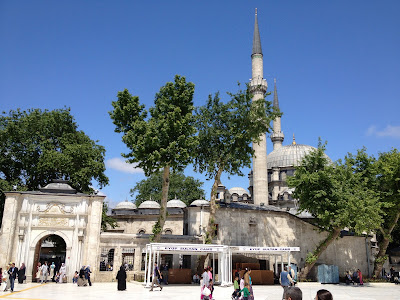History of the Temple of Abu Simbel
Hello Friends, Welcome back to another blog. In this blog, I explain the history of the Temple of Abu Simbel.
Abu Simbel, located in southern Egypt near the border with
Sudan, is home to two magnificent rock-cut temples built during the reign of
Pharaoh Ramesses II in the 13th century BCE. These temples, dedicated to the
gods Ra-Horakhty, Ptah, Amun, and Ramesses II himself, are among the most
iconic and well-preserved monuments of ancient Egypt. Here's a comprehensive
exploration of the history of Abu Simbel in 10 points:
Abu Simbel was
constructed during the reign of Ramesses II, also known as Ramesses the Great,
who ruled Egypt from 1279 to 1213 BCE.
The temples were
built to commemorate Ramesses II's victory at the Battle of Kadesh and to honor
the gods Ra-Horakhty, Ptah, and Amun, as well as to deify Ramesses himself.
The Great Temple
of Abu Simbel is dedicated primarily to Ra-Horakhty, a composite deity of the
sun god Ra and the sky god Horus.
The façade of the
temple features four colossal statues of Ramesses II seated on thrones, each
reaching a height of approximately 20 meters (66 feet). These statues were
strategically positioned to align with the rising sun during the biannual solar
alignment.
Adjacent to the
Great Temple is the Small Temple, dedicated to the goddess Hathor and Ramesses
II's beloved wife, Queen Nefertari.
The façade of the
Small Temple is adorned with statues of Ramesses II and Queen Nefertari, both
standing at a smaller scale compared to those of the Great Temple.
In the 1960s, the
construction of the Aswan High Dam threatened to submerge Abu Simbel under the
waters of Lake Nasser, formed by the dam.
To preserve these
historic monuments, an international campaign spearheaded by UNESCO led to the
relocation of both temples between 1964 and 1968 to higher ground, a feat
considered one of the greatest archaeological rescues of all time.
Twice a year, on
February 22nd and October 22nd, the sun's rays penetrate the sanctuary of the
Great Temple and illuminate the statues of Ra-Horakhty, Amun, and Ramesses II
seated within.
This solar
phenomenon serves as a symbolic reenactment of the sun god Ra entering the
inner sanctum to illuminate the gods and the deified pharaoh.
6. Cultural and Religious Significance:
Abu Simbel served
as a testament to the power and grandeur of ancient Egypt and its pharaohs.
The temples were
not only religious sites but also political propaganda, reinforcing the divine
status of the pharaoh and commemorating his military victories.
7. Architectural Marvels:
The temples at
Abu Simbel showcase remarkable engineering and artistic prowess, with
intricately carved reliefs, hieroglyphs, and colossal statues.
The interiors of
both temples are adorned with wall reliefs depicting scenes from Ramesses II's
reign, his military campaigns, and his devotion to the gods.
8. Religious Practices and Rituals:
The temples at
Abu Simbel were centers of religious worship and pilgrimage during ancient
times, attracting devotees from across Egypt and beyond.
Rituals and
ceremonies were performed by priests to honor the gods and seek their blessings
for the pharaoh and his kingdom.
9. Rediscovery and Tourism:
Following their
relocation, Abu Simbel became a popular tourist destination, attracting
visitors from around the world to marvel at its ancient splendor.
The temples have
been designated as a UNESCO World Heritage Site, recognizing their cultural
significance and the importance of their preservation for future generations.
10. Legacy and Inspiration:
Abu Simbel
continues to inspire awe and admiration as a testament to the achievements of
ancient Egyptian civilization.
Its relocation
stands as a triumph of international cooperation and conservation efforts,
ensuring that these magnificent temples endure as symbols of humanity's shared
heritage.
In conclusion, Abu Simbel stands as a remarkable testament to the grandeur and legacy of ancient Egypt, showcasing the architectural, artistic, and religious chievements of one of the world's greatest civilizations. Through its colossal statues, intricate reliefs, and enduring symbolism, Abu Simbel invites visitors to journey back in time and experience the majesty of the pharaohs and the gods they worshipped.
.jpeg)
.jpeg)

Comments
Post a Comment